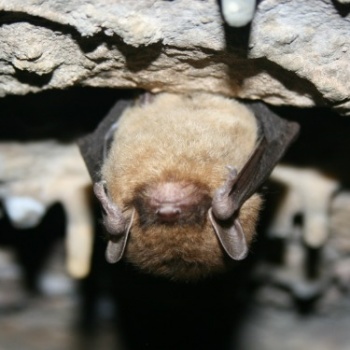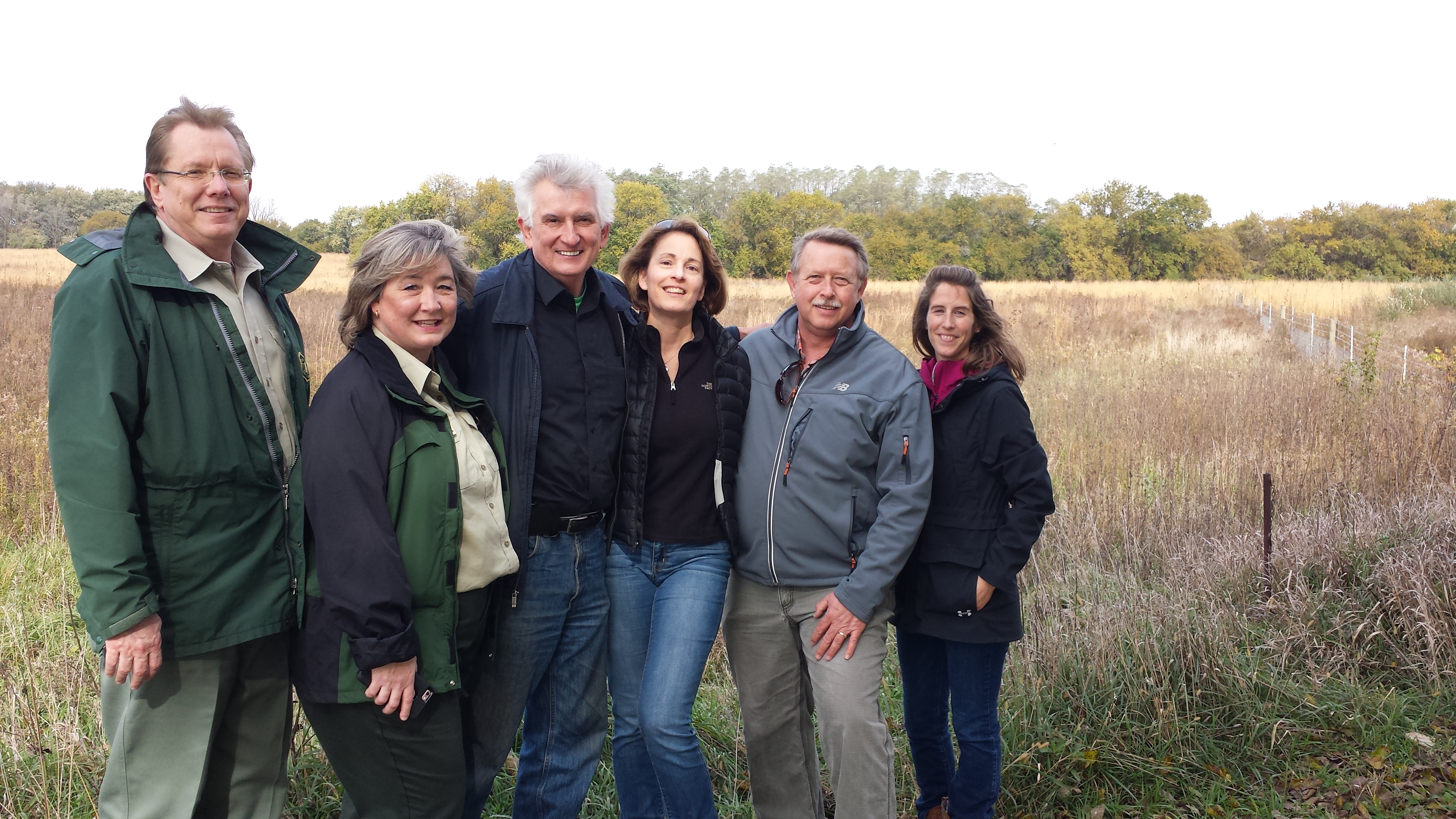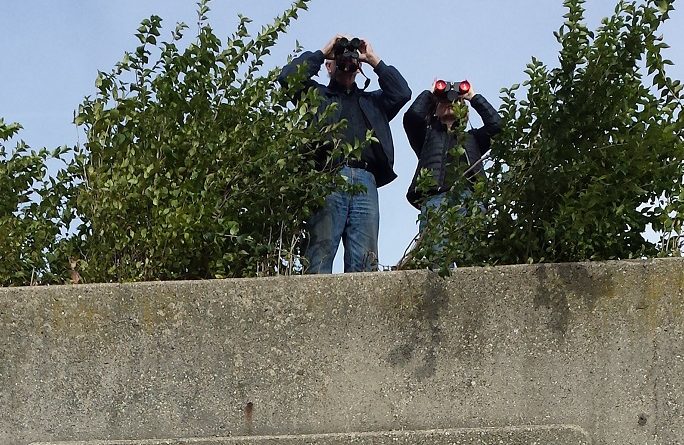October 30, 2016 – Desperately Seeking Bison
![]() On today’s show we promote next week’s Green Living Expo at McHenry County College, where Peggy and I will be hanging out, we celebrate #BatWeek with Bruce D. Patterson, MacArthur Curator of Mammals at the Field Museum, and we recap our visit to Midewin National Tallgrass Prairie to look for bison…and whether we saw any.
On today’s show we promote next week’s Green Living Expo at McHenry County College, where Peggy and I will be hanging out, we celebrate #BatWeek with Bruce D. Patterson, MacArthur Curator of Mammals at the Field Museum, and we recap our visit to Midewin National Tallgrass Prairie to look for bison…and whether we saw any.
Peggy and Mike at the Green Lving Expo at McHenry County College
If you’re out McHenry County way next Saturday, November 5, you should stop in to McHenry County College for the annual Green Living Expo. It’s all about sustainable living, ideas for energy saving, green gifts, and fun, educational exhibits. You can tour a fully decorated tiny house, recycle e-waste and more, share your experience with an ecofriendly idea or tool, test drive an electric car, and check out super mileage and solar cars. And…you can say hello to Peggy Malecki and Mike Nowak, ’cause we’ll be there, too!
Kim Hankins, who is the director of the college’s Sustainability Center, joins us in the Que4 Radio studio this morning, along with Caron Wenzel, owner of Blazing Star native seed company and an instructor in permaculture and horticulture at College of Lake County.

The sustainability center was the recipient of the College Leadership and Sustainability Award from the Illinois Green Economy Network (IGEN) in January of this year. And it’s not surprising, considering some of the green accomplishments at the college, including:
- A 91 kW solar photovoltaic installation at MCC’s Shah Center in McHenry
- Food waste assessments on campus
- Work with the McHenry County Conservation District to get hands-on prairie burn training
- A 91% recycling rate of construction debris for the renovation of an on-campus building
- Enviroware® Plates, Greenware Cups® and Earth Choice™ soup cups in the MCC Cafe.
- Recycled and recyclable material in the bookstore
- A 35% overall recycling rate
Peggy and I welcome Kim Hankins and Caron Wenzel to Pirate Radio this morning.
Celebrating #BatWeek!

http://news.nationalgeographic.com/news/2014/10/141031-bats-myths-vampires-animals-science-halloween/
Bison are BACK at Midewin National Tallgrass Prairie! (you just might not see them…)
On May 9, 2016, President Barack Obama signed the National Bison Legacy Act, which made the North American bison the official National Mammal of the United States. Given the history of this animal, and the concerted effort of the U.S. Government to wipe the species from the face of the earth in the late 19th Century, you could call this event ironic, or perhaps payback, or you could simply sit back and wonder at how much the world has changed in a little over a hundred years.
Depending on which sources you use, the bison’s numbers might have been as high as 60 million before the unfortunate arrival of Europeans on this continent and as low as 300 by 1900. Of course, the passenger pigeon numbered in the billions and we managed to completely wipe out that species (USA! USA! USA!)
The point is that bison have been brought back from the brink (though with altered and perhaps inadequate genetic diversity), to the point where approximately 500,000 bison live across North America. However, according to Defenders of Wildlife, “most of these are not pure wild bison, but have been cross-bred with cattle in the past, and are semi-domesticated after being raised as livestock for many generations on ranches. Fewer than 30,000 wild bison are in conservation herds and fewer than 5,000 are unfenced and disease-free.”
Hey, cut humans some slack! We’re a lot better at killing and destroying than restoring.
Fast forward to October 2015, when a small herd of bison was introduced at Midewin National Tallgrass Prairie as a 20-year experiment in prairie restoration. In case you’re not familiar with Midewin (pronounced mi-DAY-WIN) it is the first national tallgrass prairie in the country, located about 60 miles southwest of Chicago. They explain that
[t]his remnant prairie land once housed part of the former Joliet Army Ammunition Plant. ln 1996, the Department of Defense parceled 19,161 acres in a land transfer to the U.S. Forest Service. Since the transfer, the U.S. Forest Service along with other federal & non- governmental partners manage the restoration of this historical prairie habitat.
The Forest Service, community partners and countless volunteers have been actively restoring Midewin from industrial and agricultural lands to native tallgrass prairie since 1996, with the first 5,000 acres opening to the public in 2004. Today, more than 13,300 acres of Midewin are open to the public.
And now, some 35 or so bison are thriving on those lands, as an effort called the Midewin Bison Project. In fact, As of 05/12/16, nine baby bison have been born.
Recently, we received word that Midewin would be celebrating the first National Bison Day on November 5. So Peggy and I headed out to the tallgrass to talk to staff of the U.S. Forest Service and to see some bison.
We saw U.S. Forest Service people. Great people like Prairie Supervistor Wade Spang, Ecologist Bill Glass, Range Management Specialist Kelly Gutknecht Landscape Architect Rick Short and Public Affairs Officer Veronica Hinke.

We did not see bison.
But that’s okay, really. As noted above, you’re dealing with more than 13,000 acres of land and a little more than 30 bison, who like to…well…as the song says…roam. So you’re not going to see them every time you show up at Midewin. Nor should you. It’s not a zoo, and to be able to access wild animals “on demand” is creepy, if you ask me.
But in honor of National Bison Day, we have an all-star lineup:
- Wade Spang, Prairie Supervisor, USDA Forest Service’s Midewin National Tallgrass Prairie
- Duane Lammers, movie consultant and operator of the ranch where the 1991 Academy Award-winning blockbuster Dances with Wolves was filmed
- Keith Aune, bison program director with the Wildlife Conservation Society
- Jim Stone, Executive Director, InterTribal Buffalo Council
It’s a great show today. We hope you join us.

